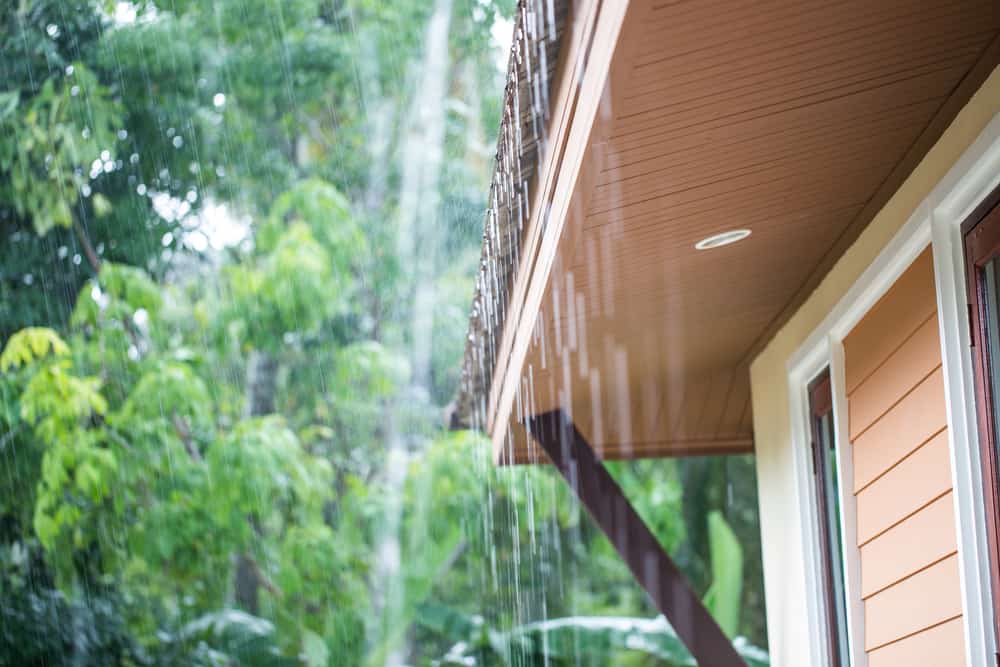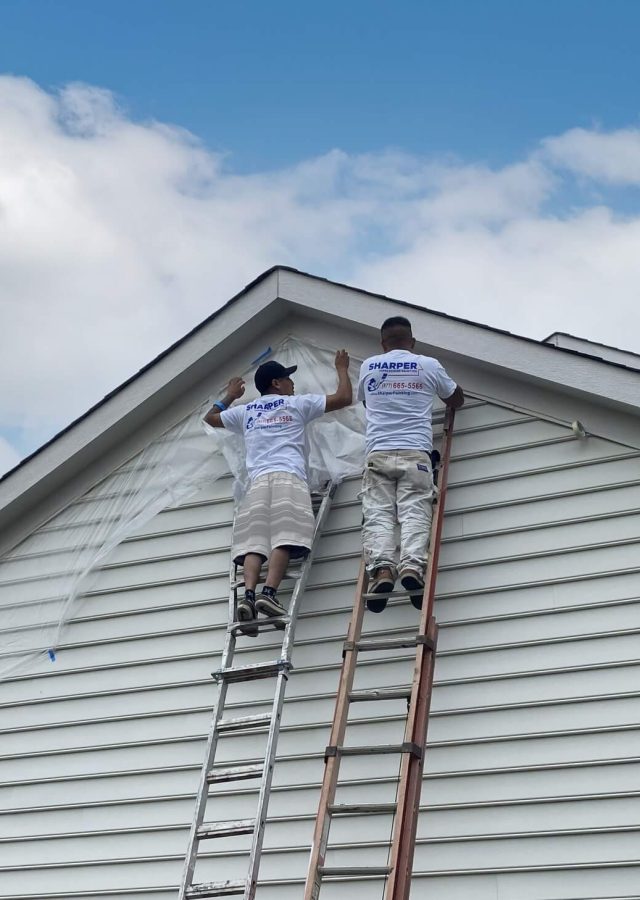How To Paint A House In Rainy Weather In Australia?
Award Winning Team
Professional Service. Friendly Team
Guaranteed Work
Stunning Results Guaranteed!
Call Us (+61) 466 895 244
We are ready to take your call
Schedule An Appointment
We are ready to take your call
Painting A House In Rainy Weather
Painting a house in rainy weather can be a challenging task, especially in Australia where the weather can often be unpredictable. But, with the right preparation and precautions, it is possible to successfully paint a house even in rainy weather.
We will discuss professional practices on how to paint a house in rainy weather in Australia with MDI Painting. What materials to use and how to protect yourself, when it is safe to paint and how to finish the job. Read on to find out how to paint a house in rainy weather a breeze!

Determining The Weather Forecast
When painting a house in rainy weather, the most important thing to do is to check the weather forecast. Knowing what the weather will be like in the next few hours can help you determine when and how to best tackle the job. Knowing if it is going to rain or if there is a chance of storms will help you plan accordingly.
Make sure you have enough time to get the job done without getting caught in the rain. You should check local weather sites, as well as radar and satellite images, to get the most accurate information. If it looks like rain, consider covering nearby plants and shrubs with plastic sheeting or tarps to protect them from overspray.
Moreover, you have to cover up any outdoor furniture and make sure windows are closed.
Take extra safety precautions: As always, safety should always come first when painting a house in rainy weather. Be sure to wear protective gear such as goggles, gloves, and clothing that covers your arms and legs. It might also be wise to bring along an umbrella or some other form of shelter in case the rain starts coming down too heavily.
Use oil-based paint: Oil-based paint works better than water-based paint on wet surfaces since it is more durable and takes longer to wear away from the elements. However, keep in mind that oil-based paints can emit harmful fumes so make sure to ventilate the area where you’re working.
When You Can Paint Your House In The Rain?
It is possible to paint a house in rainy weather in Australia with MDI Painting. But, before starting the house painting project, it is important to check the weather forecast to make sure that conditions are favourable for painting in the rain.
Generally, you can paint in light rain, however, avoid painting if heavy rain or storms are predicted. If the forecast is for light rain then you can proceed with the project by preparing your paint and covering your surfaces.
When painting the exterior house in the rain, you should ensure that the rain does not wash away any of the paint as this will cause your paint job to look uneven and patchy. It is best to use water-resistant or water-based paint to prevent this from happening. Although, you should use plastic sheeting or tarps to cover any outdoor furniture or items around the house that may be affected by the wet weather. Make sure to also cover any shrubs and plants nearby.
Once you have taken all of the necessary precautions, you can start painting. Start from the top and work your way down to keep the water from running off and carrying away the paint. Move quickly and carefully to ensure that the house painting in rain does not take too long. Also, it is important to check for any puddles or pools of standing water as these can ruin your paint job.
If you are looking for a successful house painting in a rain, following these steps can help ensure that your painting looks great even in wet weather. Just make sure that you prepare properly before getting started and do your best to keep the rain from washing away the paint!
Prepare Your Paint
If you are painting the exterior of your house in rainy weather, it is important to prepare your paint properly. Exterior house painting can be challenging in wet conditions, as the rain can cause the paint to be washed away or run off unevenly.
To avoid any issues, be sure to use high-quality exterior paint that is designed to withstand the elements. Whether you will be using a sprayer or roller to apply the paint, make sure that it is rated for exterior use and is waterproof too.
When mixing your paint, you should use a thinner than usual to ensure that the paint adheres to the surface properly even in wet weather. If you are planning on painting multiple coats, opt for a water-based primer. This will help the paint adhere more easily and will provide additional protection against moisture damage.
Finally, you should always consider the temperature. If temperatures are too low, the paint will not dry properly and could become damaged by moisture. Make sure to read the instructions on your paint can before beginning to ensure that the temperature is suitable for painting.
Cover Your Surfaces From The Rain
When house painting in the rain, it is essential to protect both the exterior and interior of your house from potential damage. Start by covering any furniture and floors in the house with tarps or plastic sheeting to protect them from overspray.
For residential house painting, take extra steps to cover and seal doors, windows, and trim pieces with plastic sheeting and painter’s tape. This helps ensure that no paint gets into the interior of your home while you are working outside. Also, make sure that all your surfaces are properly sealed to prevent any water from entering. And, if you are using a ladder, use a tarp or plastic sheeting to protect the ground below it.
It’s time to start!
Start Painting
Now that you have prepared your paint and surfaces, it is time to begin painting. Depending on the type of painting you are doing, exterior or interior house painting, there are a few steps to follow.
For exterior house painting:
- Start by using a brush to paint around window and door frames, as well as other hard-to-reach areas.
- Next, use a roller to apply a coat of paint to the walls, starting at the top and working your way down.
- And finally, use a brush to paint edges and trimming, such as doors, windows, and soffits.
For interior house painting:
- Start by using a brush to paint the trim, such as doors, windows, baseboards, and crown moulding.
- Next, use a roller to apply a coat of paint to the walls, starting at the top and working your way down.
- Lastly, use a brush to go back and touch up any edges that were not properly covered by the roller.
But before you start painting, make sure you have enough ventilation in the area so that you do not get overwhelmed with fumes from the paint. After you are done painting, wait at least 24 hours before applying any additional coats of paint. If rain is forecasted during this waiting period, cover the painted surfaces with a tarp or plastic sheeting to protect them from moisture.
Furthermore, be aware of temperature when you are painting outside – in general, exterior house painting should be avoided when temperatures reach below 10°C, while interior house painting should be avoided when temperatures exceed 25°C.
Remember, you should follow all the necessary precautions when planning to paint during wet weather such as waterproofing the ground, wearing protective gear and avoiding slippery ladders. It may be more difficult to paint during wet weather conditions but with proper planning and preparation, you can ensure that your project goes off without a hitch!

MDI Painting Melbourne offers both residential and commercial house painting in Melbourne and other famous cities in Australia. Cities such as East Melbourne, Doncaster, Richmond, Preston, Dockland, Franstan, etc. We are famous for interior painting, exterior painting, pressure washing, stained timber restoration, and weatherboard house painting.
For more about residential and commercial painting in Australia, call us at (+61) 466 895244 or email infio@mdipainting.com.au.
